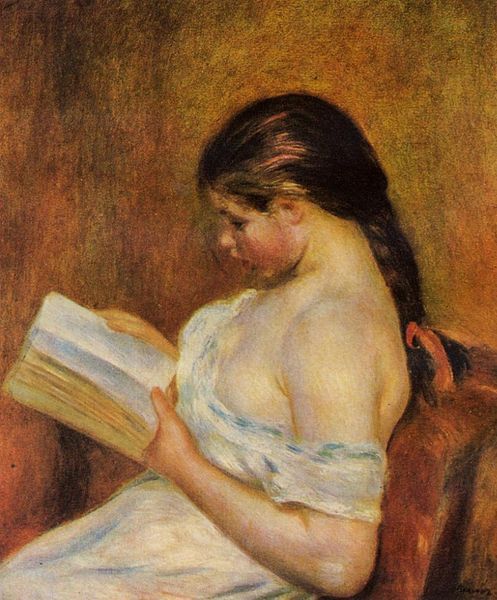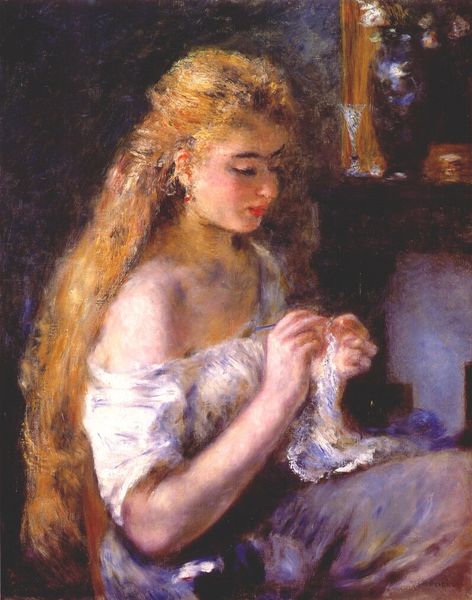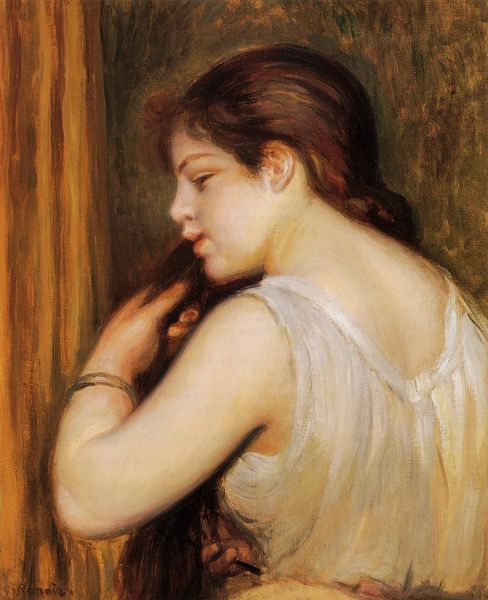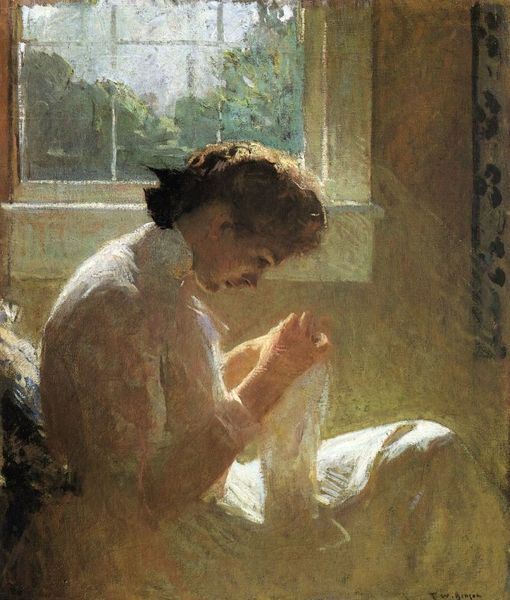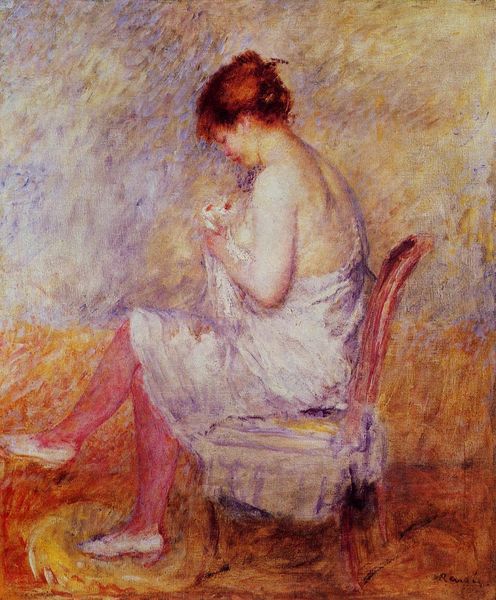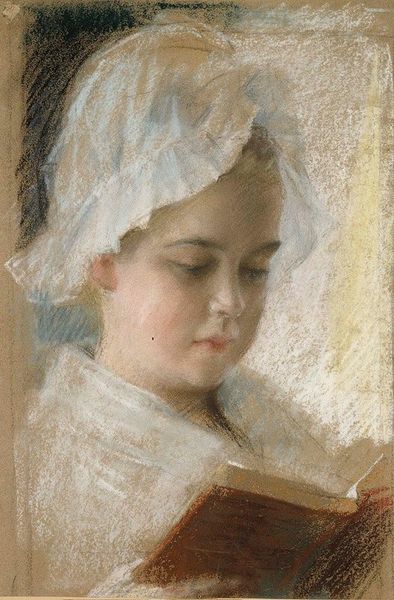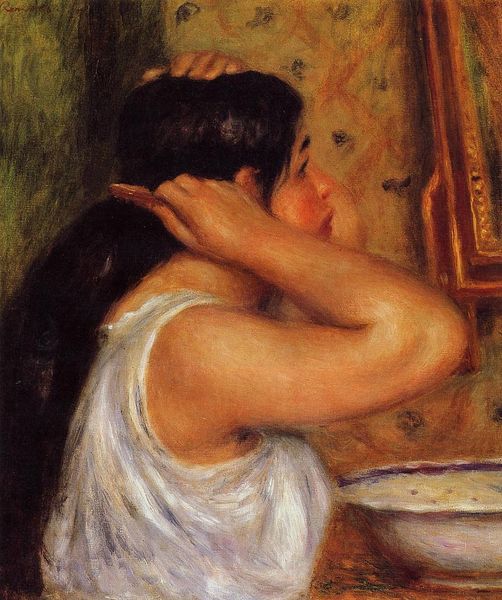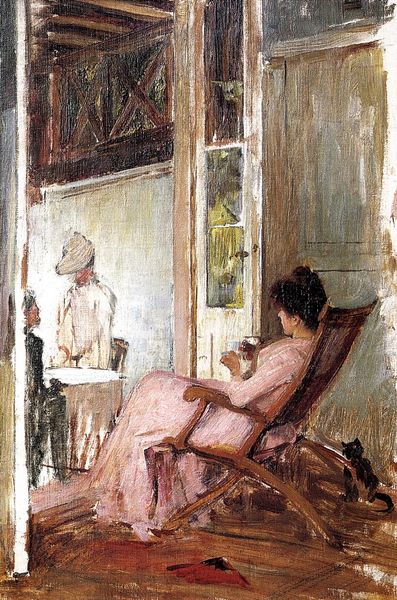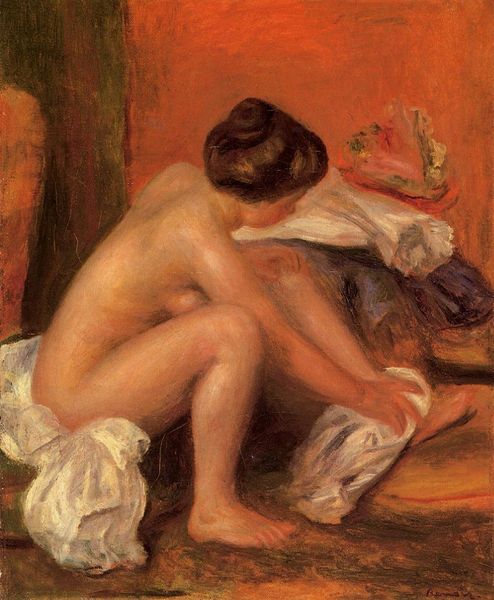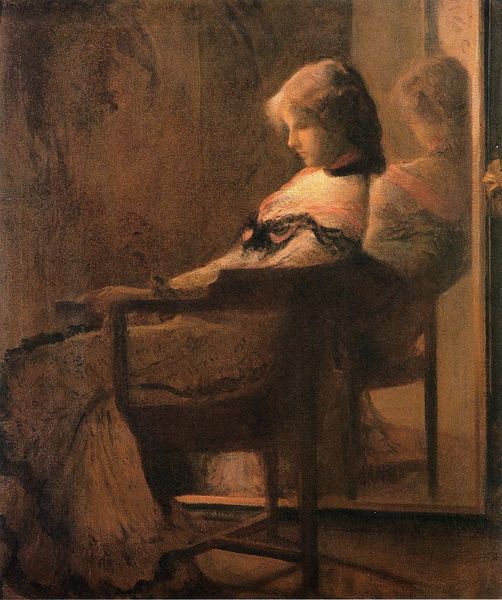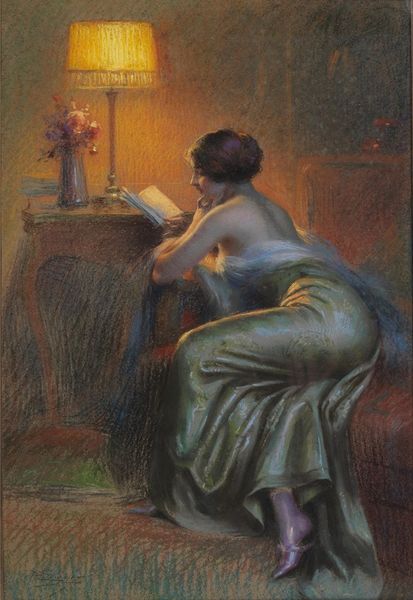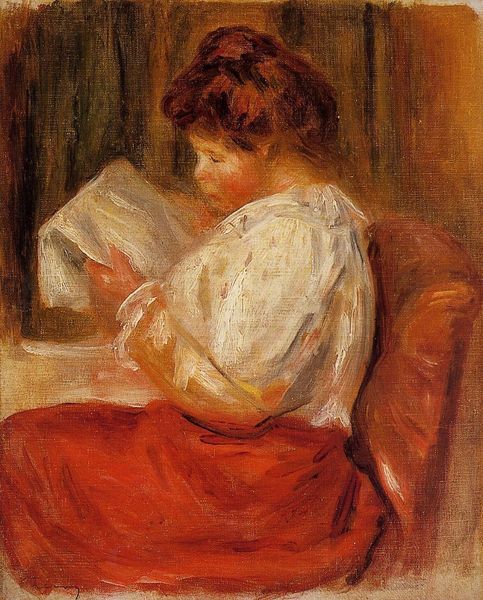
Copyright: Public domain
Editor: This is Renoir's "A Girl Reading," painted in 1891 with oil paints. There's something incredibly intimate about it, catching this moment of quiet contemplation. What stands out to you as you consider this work? Curator: For me, the image speaks volumes about the evolving role of women in the late 19th century. We see this woman engaged in an act of intellectual self-improvement, but consider the societal constraints of the period. To what extent was this quiet pursuit actually available to women across different classes? Renoir, as part of the Impressionist movement, was often focused on bourgeois leisure, but doesn't this painting subtly reveal both the privilege and the potential of women's literacy at that time? Editor: That's interesting. I hadn’t thought about the class implications. The soft brushstrokes and the light falling across her face made me focus more on her interior world. Do you think that was Renoir’s intention, or do you think he wanted to make a broader social statement? Curator: The beauty of art is that it often holds multiple truths simultaneously. Renoir, consciously or not, captured a transitional moment. Her individual act of reading embodies a larger shift in women's access to education and self-expression. Perhaps he meant it as a genre painting, but through a contemporary lens, it reveals something far more profound. What do you think? Does it prompt you to reflect on current gender disparities within education and intellectual life? Editor: Absolutely. Considering it within a broader socio-political context makes me see it with completely different eyes. It's a good reminder of the ongoing struggle for equal access to knowledge and self-representation. Curator: Precisely. By engaging in this kind of dialogue, we can see beyond the surface beauty and begin to really interrogate art's complex role in shaping—and reflecting—our social realities.
Comments
No comments
Be the first to comment and join the conversation on the ultimate creative platform.
